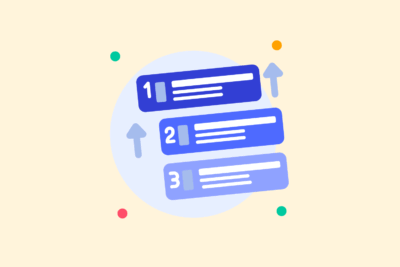AI-optimized title tags and meta descriptions: what really works?

Title tags and meta descriptions remain important elements in your SEO strategy. They influence the click-through rate (CTR), guide the interpretation of your page and are often the first contact moment in the SERP. AI tools make it possible to generate these elements at scale, but the question remains: what really works?
What is the role of titles and descriptions in 2025?
Title tags remain an important SEO factor. They help Google understand the topic of the page and often determine the headline displayed in search results. Meta descriptions are not a direct ranking factor, but they do influence users’ click behavior. (1)
The use of AI in the SERP (such as SGE) has changed the context in which titles and descriptions appear. Still, a strong title increases relevance and visibility. A good meta description supports the intention and convinces to click. Both elements should be functional, but also appealing and understandable.
Automatically generated titles from CMS or AI are rarely optimal without adjustment. Quality comes from conscious choices, not speed alone.
How AI helps with titles and metas
AI tools can contribute to better titles and descriptions in several ways. Consider:
- Generating multiple variants based on input (such as H1, intro or keywords)
- Adjusting tone or length according to the type of search result or target audience
- Summarizing long content into catchy sentences that convert
By using AI as a sparring partner, you can arrive at good formulations faster. This prevents repetition, speeds up workflows and provides inspiration for A/B testing at scale. (2)
What you need to stay sharp on
AI often generates texts that are grammatically correct, but content remains vague or strategically deficient. Therefore, I always critically evaluate the output on three points: does the title match the user’s search intent? Does the text offer enough unique added value compared to what already exists? Is there consistency between the title, the meta and the actual content on the page?
I never add generic phrases like “Read all about…” here because they don’t provide value. Always use AI output as a starting point, not an end result. The strongest titles and meta descriptions are created when you combine AI suggestions with editorial precision and strategic insight.
Getting started with SEO? Feel free to get in touch.

What really works?
The effectiveness of titles and meta descriptions is determined by how well they earn the click. In practice, I see that this works best:
- Titles that combine the main term with a concrete promise or outcome
- Meta descriptions that briefly summarize, inspire confidence and subtly prompt action
- Use of active language without exaggerated claims or contrived turns of phrase
In addition, pay attention to the length of page titles and meta descriptions: write titles around 50-60 characters and description tags around 140-160 characters. AI helps you keep these limits sharp without losing content.
A/B testing of AI meta-texts
For a SaaS client with thousands of product pages, we generated AI-generated title tags and meta descriptions that adhered to fixed tone-of-voice rules. After implementation on a subset of 250 pages, we saw through A/B testing that AI variants delivered 11% higher CTRs on average. The success appeared to be primarily in semantically rich titles with strong action words, combined with descriptions that offered immediate relevance within 130 characters. (3)
Summary
AI makes it possible to generate title tags and meta descriptions faster and more consistently, but does not automatically make them good. The value of AI is in the combination: AI for suggestion and speed, you for context, intent and editing.
By bringing both elements together, you create titles and metas that are not only correct, but also generate clicks. In the end, that’s what it’s all about.
| # | Source | Publication | Retrieved | Source last verified | Source URL |
|---|---|---|---|---|---|
| 1 | Influencing Title Links in Google Search | Google Search Central | Documentation | Google for Developers (Google for Developers) | 09/05/2025 | 09/05/2025 | 21/11/2025 | https://developers.googl.. |
| 2 | Meta Tags: What They Are & How to Use Them for SEO (Semrush Blog) | 30/01/2025 | 30/01/2025 | 21/11/2025 | https://www.semrush.com/.. |
| 3 | 14 Ways to Use AI for Better, Faster SEO (SEO Blog By Ahrefs) | 17/09/2024 | 17/09/2024 | 03/11/2025 | https://ahrefs.com/blog/.. |
- (09/05/2025). Influencing Title Links in Google Search | Google Search Central | Documentation | Google for Developers. Google for Developers. Retrieved 09/05/2025, from https://developers.google.com/search/docs/appearance/title-link
- Lahey, C., Ali, A., Hanna, C., & Fogg, S. (30/01/2025). Meta Tags: What They Are & How to Use Them for SEO. Semrush Blog. Retrieved 30/01/2025, from https://www.semrush.com/blog/meta-tag/
- Law, R. (17/09/2024). 14 Ways to Use AI for Better, Faster SEO. SEO Blog By Ahrefs. Retrieved 17/09/2024, from https://ahrefs.com/blog/ai-seo/






